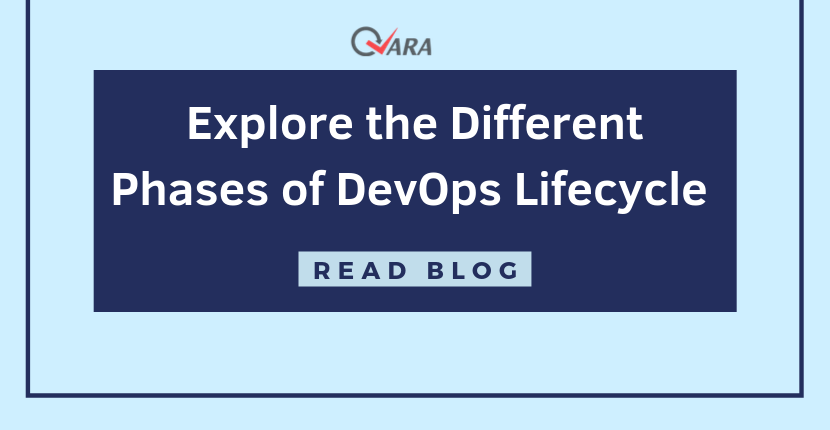
The Different Phases in the DevOps Lifecycle
What is DevOps? Well, if you are familiar with the common terms in software development, you must have heard the term 'DevOps'. DevOps is a term that is a combination of 2 words – Development and Operations. At the core of DevOps lies the principle of a single team managing the entire app development lifecycle, right from development and testing to deployment and operations.
So, why DevOps? The reason DevOps is gaining immense popularity as an approach, is the fact that it is designed to reduce the length of the software development lifecycle. With DevOps, the software development gets faster, but there is also focus on new updates, bug fixes, new features, etc. frequently. Hence, DevOps has created the need for advanced automation testing tools to help QA teams keep up with the need for faster testing with increased test coverage. QARA Enterprise is an example of such a tool that supports simultaneous test executions as well as integrations with leading platforms.
DevOps makes the application well-equipped to meet the changing business requirements. Thus, with the DevOps approach, it is possible to develop high quality software that takes less time to develop, yet is highly reliable. Now that we have learnt about what DevOps is and what its importance is to the world of software development, we shall have a look at the phases in the DevOps lifecycle.
DevOps Lifecycle Phases
The DevOps lifecycle comprises of the 5 Cs and these are as follows:
- Continuous Development
- Continuous Testing
- Continuous Integration
- Continuous Deployment
- Continuous Monitoring
- Continuous Monitoring

Now, let us learn a little about the significance of each of these phases, one by one.
1] Continuous Development:
The first phase of the DevOps lifecycle, Continuous Development involves the phase in which all the planning and coding is done for the software application. This is the phase where the team members sit down and visualize the outcome or, in other words, how the software application will turn out to be. Once the vision is in place, the developers start writing and maintaining the code. There are several tools used for maintaining the code – the process is referred to as Source Code Management – and some of these tools are SVN, Git, Jira and CVS.
2] Continuous Integration:
After the phase of Continuous Development comes Continuous Integration, and the first phase automatically translates into the second one. This phase involves different steps which include planning of test execution to be carried out in the testing phase, as well as understanding the project requirements provided by the client to incorporate the necessary features in the software product. The stage also involves changes made into the source code frequently, and often on a daily or weekly basis. Many refer to the Continuous Integration stage as the heart of the overall DevOps lifecycle, as this is the phase in which problems in the code can be detected early on.
3] Continuous Testing:
The Continuous Testing phase involves the phase in which the developed code is continuously tested to look for bugs, defects and flaws. This is also the phase where the usability of the software is tested using the set of best practices for QA, and it is determined whether the software meets the specifications defined by the client. Continuous testing is carried out using automation testing tools, which can be open source tools like Selenium or advanced test management tools like QARA Enterprise and TestNG. These tools allow the QA team to execute multiple tests in parallel in order to increase test coverage and increase the efficiency of the testing process. The outcome from the testing is shared with the developers to make changes in the product.
4] Continuous Deployment:
The fourth phase in the DevOps lifecycle is that of Continuous Deployment and it involves deploying the code such that it doesn't affect the performance of the product or website. During this stage, it is important to ensure the code is deployed accurately on all the servers. It is all about ensuring the product is deployed with utmost accuracy, with no scope for errors.
5] Continuous Monitoring:
The fifth phase in the DevOps lifecycle is the Monitoring phase which involves recording and processing of key information about the application to deduce the areas where more efforts are required, as well as the general patterns. This one is an operational phase and the objective is to enhance the software application's operational efficiency, and also continuously monitor the performance of the application. Hence, this one is a crucial phase.
Conclusion:
The DevOps approach is emerging as the way to go when it comes to developing software applications that meet the highest quality standards, and at the same time, can be delivered with a faster time to market. The future belongs to DevOps as we expect to see more and more dynamic apps being developed, that can keep up with the fast changing market demands and user requirements. As DevOps continues to grow, the future will also witness rapid advancements in the field of automation testing tools.
